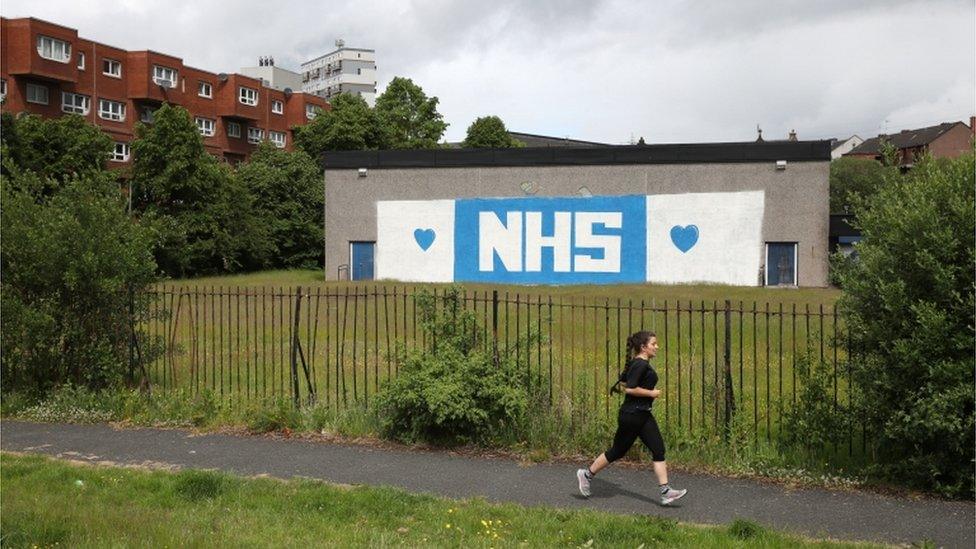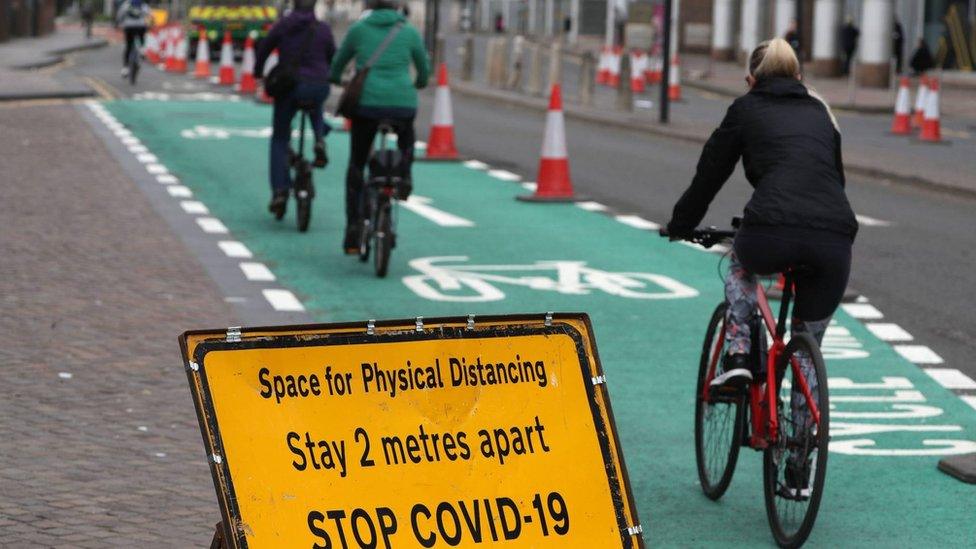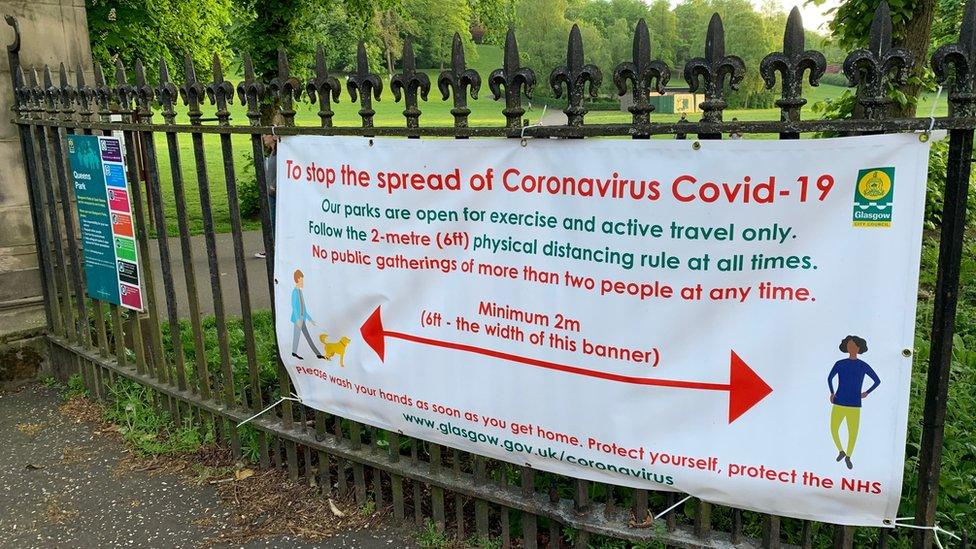Coronavirus: Nicola Sturgeon 'optimistic' about easing lockdown rules further
- Published
Nicola Sturgeon is "optimistic" that coronavirus restrictions could be eased further on 18 June
Nicola Sturgeon is "optimistic" that Scotland's coronavirus restrictions could be eased further on 18 June after a second day with no recorded deaths.
The first minister said the continuing "steady decline" in the death rate was "obviously very encouraging".
However, she warned it was "highly likely" that more deaths would be registered in the coming days.
And she confirmed that "shielding" of those most at risk from the virus would continue until the end of July.
She said changes were likely to be made to allow people in this category to exercise outdoors, but that shielding must continue due to the "very significant threat" of the virus.
Sunday marked the first time since the early days of the pandemic that no new deaths of people confirmed to have the virus were recorded in Scotland.
After reporting that there had not been any further deaths on Monday, Ms Sturgeon said: "I can't tell you how much I've longed to report such a development."
However, she warned that because fewer deaths tend to be registered at weekend, it was "highly likely" that more would be reported in the coming days.

Ms Sturgeon said she was "optimistic" that if progress continued to be made, Scotland could move into the next phase of the government's "route map", external towards lifting lockdown on 18 June.
That is the next formal review point for the Covid-19 restrictions.
The second phase could allow people to meet up with another household indoors, as long as physical distancing is maintained. It may also involve re-opening more shops and businesses, as well as the resumption of professional sport.
The first minister said any changes might not include every element of the second phase, but that the Scottish government would also look to "accelerate things from later phases" if possible.
She said ministers "want to get the economy back to as much normality as possible", but that "we have to do it safely so we don't set everybody back again by allowing the virus to run out of control".

She added: "We are making significant progress against this virus, but it is at a very sensitive and critical juncture.
"We need a safe foundation to lift restrictions more meaningfully in the weeks to come."
The first minister said people "should still be staying home most of the time and meeting fewer people than you normally would".
While "very encouraging progress" was being made, she said that "sticking with this for a bit longer really does matter".
She said: "These painful but necessary sacrifices have brought us to where we are today, with this virus in retreat. It is in retreat, but it is not gone.
"This is such a critical junction in our battle against this virus. We will either keep beating it back, or give it a chance to roar back with a vengeance."

The route map for easing lockdown

The Scottish government has identified four phases for easing the restrictions, external:
Phase 1: Virus not yet contained but cases are falling. From 28 May you should be able to meet another household outside in small numbers. Sunbathing is allowed, along with some outdoor activities like golf and fishing. Garden centres and drive-through takeaways can reopen, some outdoor work can resume, and childminding services can begin.
Phase 2: Virus controlled. You can meet larger groups outdoors, and meet another household indoors. Construction, factories, warehouses, laboratories and small shops can resume work. Playgrounds and sports courts can reopen, and professional sport can begin again.
Phase 3: Virus suppressed. You can meet people from more than one household indoors. Non-essential offices would reopen, along with gyms, museums, libraries, cinemas, larger shops, pubs, restaurants, hairdressers and dentists. Live events could take place with restricted numbers and physical distancing restrictions. Schools should reopen from 11 August.
Phase 4: Virus no longer a significant threat. University and college campuses can reopen in full, mass gatherings are allowed. All workplaces open and public transport is back at full capacity.

RISK AT WORK: How exposed is your job?
SCHOOLS: When will children be returning?
EXERCISE: What are the guidelines on getting out?
THE R NUMBER: What it means and why it matters
RECOVERY: How long does it take to get better?
